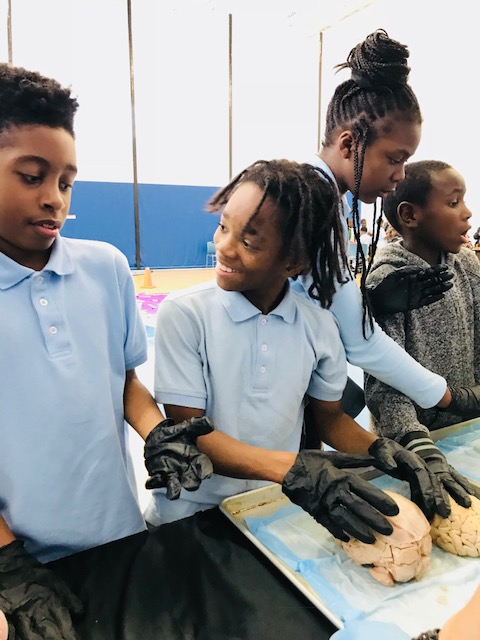Post by Andrea Anaya, Noggin volunteer, Portland State University Neuroscience Club Treasurer
Speaking to the Neuroscience and STEAM caucuses in the U.S. House of Representatives, volunteering at Sidwell and Turner Elementary in D.C., and presenting a poster at the Society for Neuroscience conference opened doors for further connection between scholars and members of our local, national and international communities..!
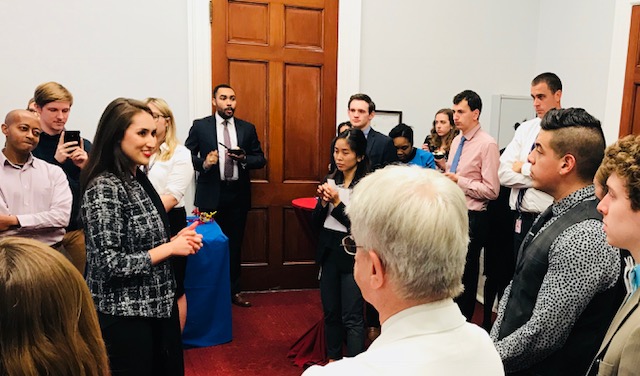
LEARN MORE: From classrooms to Congress!
These inspiring experiences commenced upon on our arrival as we prepared our Art of Neuroscience booth, brimming with colorful pipe cleaner neurons!

On each day, not only were these neurons a major attraction for curious conference spectators, but a wonderful platform to advocate for the necessity and effectiveness of outreach. With each twist of a pipe-cleaner, Ph.D.’s, graduate students, and undergraduates enjoyed the relaxing process of creating their own brain cells amidst the stress and anxiety of presentation…

Yet again, the combination of art and science prevailed by providing an outlet, strengthening “muscle memory” (well, basal ganglia and cerebellar coordination of implicit motor behavior 

Not to our surprise, the experience was so effective that on several occasions we had regular visitors, from Curitiba, Colombia to North Carolina, who shared in the bonding and communication produced by something so simple yet powerful…
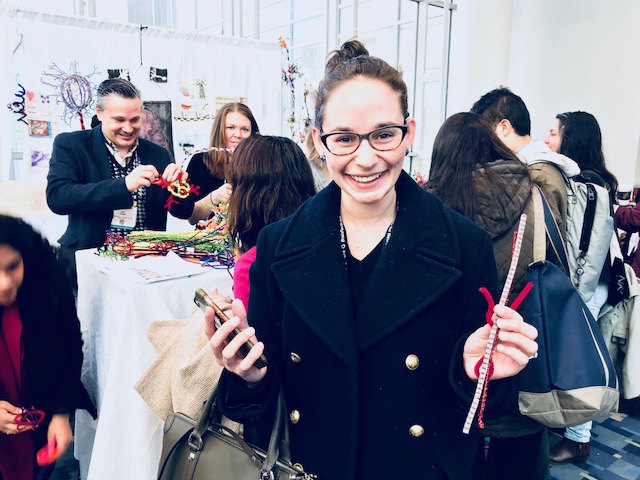
It was also a great affirmation when professors who were equally passionate raided our booth by taking as much advice, STEAM art project instructions, stickers, and pipe-cleaners their hands could carry. On one occasion, I remember quite clearly that a volunteer from a local hospital in Washington was quite impressed by the multiple types of neurons and how to make them…
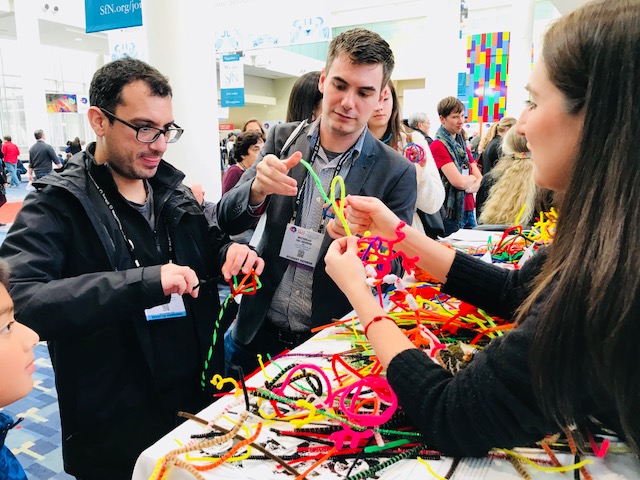
…so I felt it was only right to make him take fistfuls of pipe-cleaners so that he could teach children while volunteering in D.C. Though many people were shy to approach initially and had a hint of hesitation, once they finished the process they felt empowered by what they were able to make, which allowed them to open up and get excited about the experience. Overall, as members of NW Noggin, we lavished in the positive reception that our pipe cleaner neurons attained as we established yet another common ground in our mission to make neuroscience outreach and education meaningful, informative, motivating, engaging – and fun.

Even so, the real victory and reason for our outreach was the time when we came upon one of our greatest challenges yet…a student body of 650+ energetic, boisterous, and enthusiastic students from Turner Elementary. Each class rotated around stations with donated human brains, pipe-cleaner neurons, paint, and a giant brain made out of paper sprawled across the gym floor…
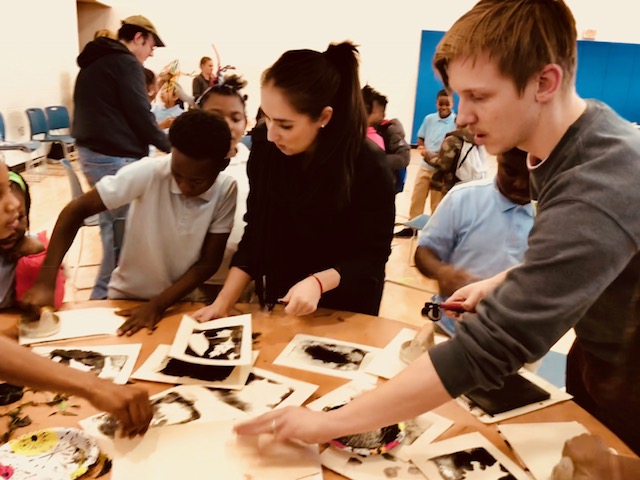
On each occasion, when a new grade would enter, we would introduce ourselves quickly then run to our stations in preparation for a tsunami of tiny hands ready to make some neurons..!
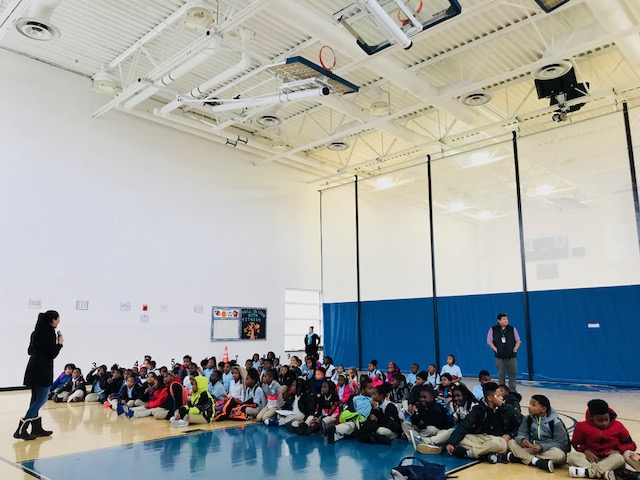
With the sheer power of colorful pipe-cleaners, a giant brain, incredible Turner staff, and the interest of each elementary student we were able to share an experience and create wonderful memories everyone can draw upon in the future…


The point, yet again, was to emphasize the need to provide our education systems with learning experiences like these, where students are encouraged to incorporate both science and art in a way that is meaningful to them. Neuroscience is not scary, it is not boring, and it is not tedious – it is about the most interesting organism in your life, and that just happens to be you!

What we teach and advocate for is not only motivating and informing future artists and scientists and policy makers but also the creation of better learning environments, which aren’t dominated by tests, power-point slides and seemingly endless, academic jargon-packed lectures.
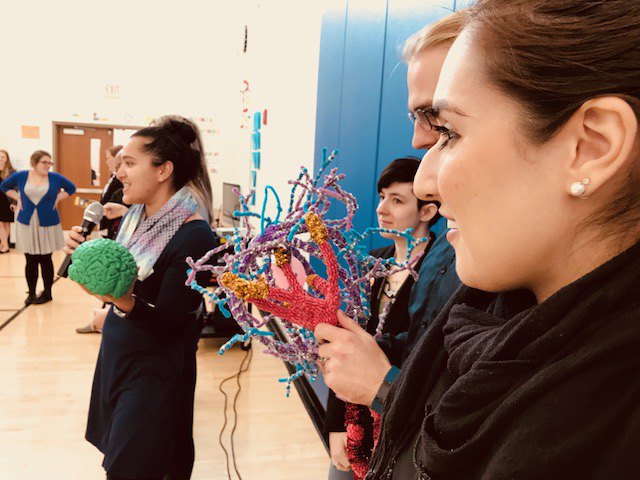
Ultimately, we want to make their experience real, and encourage students to physically engage with and touch neurons as they play with pipe cleaners, hold a brain, hear about what neurons and networks of neurons can do, and write and draw about their experiences, incorporating various learning styles within a fun, multi-disciplinary and multi-generational environment. It is but a taste of the impact opportunities such as these may have which should be provided in every institution.
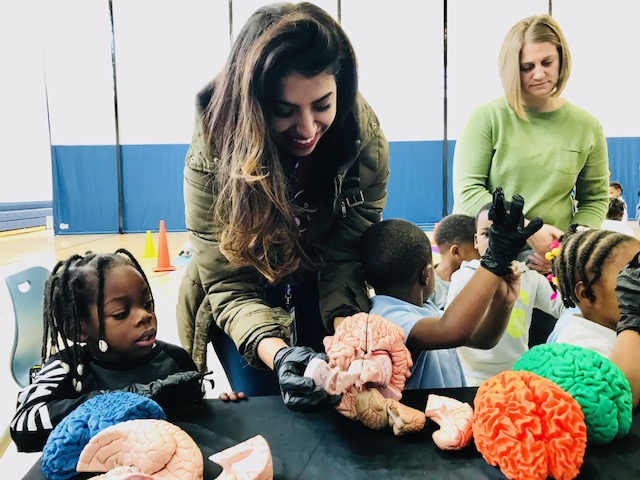
By relating this information to the students, they are more engaged when learning that brain cells are found within each of us and are something we all have in common. In this way, the experience teaches us to advocate for the plethora of similarities among an exciting cultural sea of differences. Our volunteer efforts to bridge this gap of understanding flourished at Turner and at the Society for Neuroscience, and it is no surprise that we traveled over 3,000 miles to find more people who love to share, love to laugh, and love art and neuroscience just as much..!
